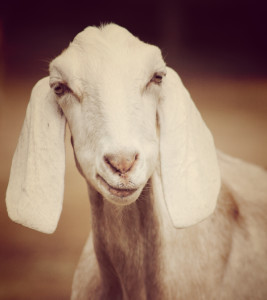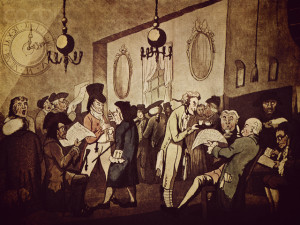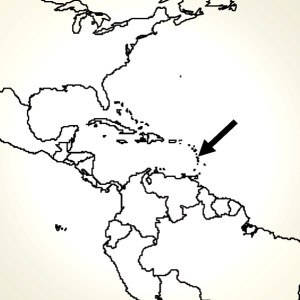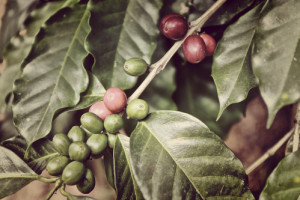In honor of National Coffee Day, I’ve put together a very brief history of coffee. Note that this post absolutely gives undue weight-in-word-count to the more entertaining aspects of our favorite drink’s past.
Thank the Goats
The histo ry of that rejuvenating elixir of life you drink every morning (and afternoon, and night for some of us) begins in Ethiopia, where coffee originated. And you can thank the goats.
ry of that rejuvenating elixir of life you drink every morning (and afternoon, and night for some of us) begins in Ethiopia, where coffee originated. And you can thank the goats.
According to legend, a goat herder named Kaldi noticed that when his goats ate the berries from the Coffea plant, they seemed to have an extra pep in their step. Kaldi tried the berries himself and experienced the same boost. Excited, Kaldi took the berries to a neighboring Islamic monastery. The monks did not share Kaldi’s enthusiasm and threw the berries into the fire. The coffee beans, now roasted, were salvaged from the fire, and the world had its first cup of coffee.
Or maybe it was the birds. Another legend tells of a Yemenite Sufi mystic who, while on a trip to Ethiopia, noticed that the birds eating Coffea plant berries were a bit chirpier than their peers. The mystic tried the berries himself, and discovered the wonders of coffee.
What we know for sure is that by the 15th century, people knew about coffee, which had made its way from Ethiopia to Sufi monasteries in Yemen. By the next century, Persia, Egypt, Turkey and Syria were all caffeinating, and coffee houses were established.
Music, Politics, and Hopscotch
From the beginning, coffee houses were community hubs — places to gather and socialize over cups of brew. Information was exchanged, stories were told, and connections were made. There was news, music, and politics.
And hopscotch. Obviously.
Jean Chardin, a French traveler to Persia in the 17th century, reportedly described the coffee house scene this way:

People engage in conversation, for it is there that news is communicated and where those interested in politics criticize the government in all freedom and without being fearful, since the government does not heed what the people say. Innocent games… resembling checkers, hopscotch, and chess, are played. In addition, mollas, dervishes, and poets take turns telling stories in verse or in prose…
By the 17th century, coffee was being served in Europe, and coffee houses had become popular in countries across the West.
Ask the Pope
It wasn’t all happy brewing, though. Various religious organizations and governments questioned, and even banned coffee. Such bans were often relatively short-lived, at times because religious and political leaders themselves wanted to enjoy their brew.
When coffee came to Italy in the 17th century, local clergy were skeptical and some wanted to prohibit its consumption. To resolve the matter, they turned to the pope. Pope Clement VIII’s response after tasting coffee?
Two thumbs up.
Toss the Tea, Give Me the Beans
Coffee made its way to the Americas, but initially took a back seat to tea. Then there was that tax and that party, and tea was no longer the beverage of choice for good, patriotic Americans.
Enter coffee with new popularity. (Today, coffee makes up about 83% of the total hot beverage market.)

The coffee plant laid roots in the Americas circa 1720, when a French naval officer brought a seedling to Martinique in the Caribbean. This seedling eventually led to a booming coffee industry in the Caribbean, Central and South America. (The beans in the house blend served at La Vita Dolce are quite possibly from plant descendants of the Martinique seedling.)
The Portuguese, who had colonized Brazil, also wanted in what had become quite the money-making plant. So the King of Portugal sent Francisco de Melo Palheta to get his hands on seeds from French Guinea. While he initially had a hard time of it, Francisco eventually charmed the French Governor’s wife, who provided the seeds that started the Brazilian coffee industry. By the mid nineteenth century, Brazil was the world’s largest coffee producer, building its coffee economy primarily on slave labor. When slavery was abolished in Brazil in the late nineteenth century, the country continued to dominate global coffee exports.
And We’re Still in Love
 Today, over 75% of U.S. adults drink coffee, and 58% report drinking coffee daily. The specialty coffee movement and corresponding availability of better beans and more conscientious brewing methods has led many to view their cup of coffee not as a commodity, but as a drink that can have a spectrum of flavors and bodies. At La Vita Dolce, we spent months brewing and tasting coffees from around the world before selecting what would become our house blend.
Today, over 75% of U.S. adults drink coffee, and 58% report drinking coffee daily. The specialty coffee movement and corresponding availability of better beans and more conscientious brewing methods has led many to view their cup of coffee not as a commodity, but as a drink that can have a spectrum of flavors and bodies. At La Vita Dolce, we spent months brewing and tasting coffees from around the world before selecting what would become our house blend.
Coffee in the cup comes to the consumer after being touched by many different stakeholders — from farmers to importers to roasters and baristas. Appreciation for this chain of supply and the amazing end cups it can produce when care is present throughout the process has shifted how many think about and value their coffee.
